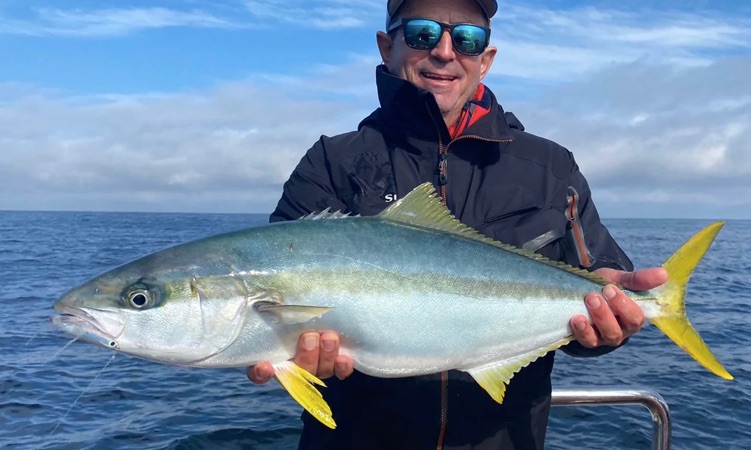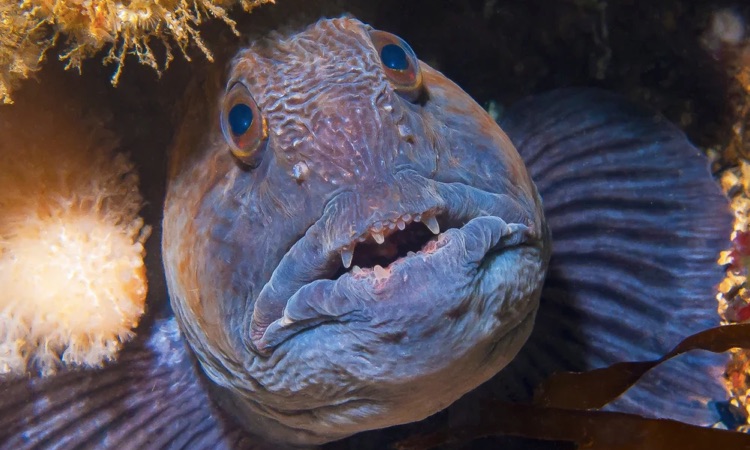Bonito Fish be found in nearly every ocean and sea on the planet and are from a wide variety of species and genera. The Bonito tribe includes mackerels, tunas, and bonitos.
In the United States, you may catch the plain bonito (Orcynopsis unicolor), the Pacific bonito (Sarda lineolata), the eastern Pacific bonito (Sarda chiliensis), and the Atlantic bonito (Sarda sarda).
The family name derives from the fact that each species in it has two distinct dorsal fins, a tail meant for incredible speed, and a sleek, streamlined form.
A chain of “finlets” extends from the second dorsal fin on the dorsal and ventral sides toward the tail, as well. Members of this family do not have scales.
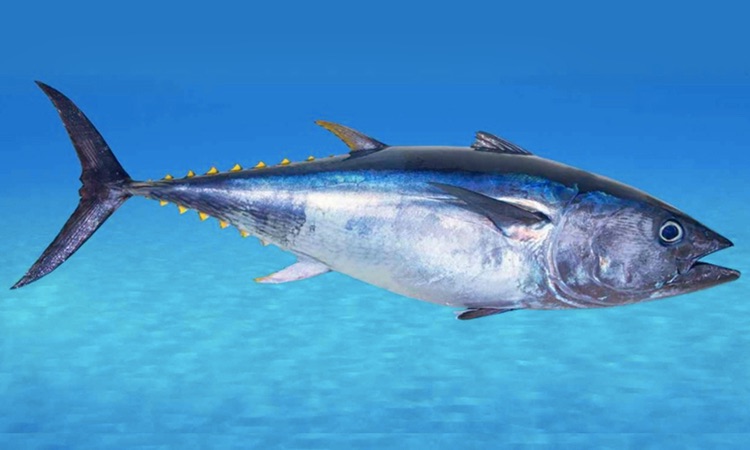
Quick Facts
- Bonitos can swim at a speed of 40 kilometers per hour.
- Bonito fish are carnivorous hunters that target a range of smaller species, including insects and snails.
- Some fishermen use them as bait for catching larger fish.
- They swim in large schools.
Bonito Fish Nomenclature
The most widely eaten species of Bonito Fish are the Atlantic Bonito, the Pacific Bonito, the Indo-Pacific Bonito, and the Australian Bonito.
Bonita Fish, popularly known as Sarda, belongs to the genus Sarda. The Latin names for these species are Sarda Sarda (Sarda Chiliensis), Sarda Orientalis, and Sardia Australis, respectively.
Bonita Fish is a member of the genus Sarda. The second word in each scientific name refers to the area where Bonita Fish may be found.
The Scombridae family includes these fish. This family has 51 species. Other fish in the family include tuna, mackerel, and butterfly king fish. Bonito Fish are members of the Actinopterygii order.
Appearance
Arora’s Bonito Fish (Morone chrysoptera) can reach a length of up to 30 inches. They have a more streamlined form than that of a tuna, with a body shape similar to that of one. Their backs are blue with longitudinal stripes, and their undersides are silver. A Bonito Fish’s tail is forked, with a tiny base.
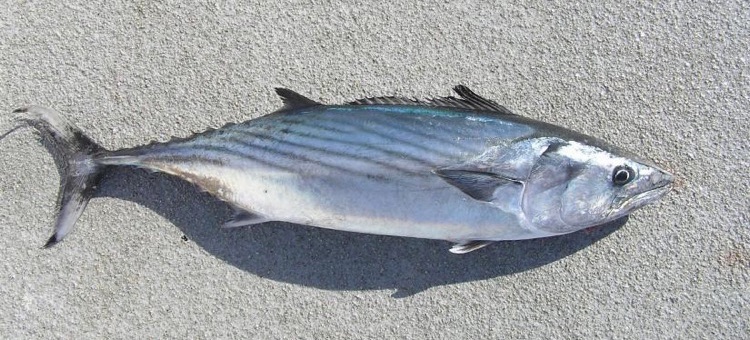
Habitat & Distribution
The four distinct species are distributed across the world. Pacific bonitos inhabit areas between Chile and Alaska’s Gulf of Alaska, although most congregate in warmer regions near southern California and Mexico.
Atlantic Bonito Fish are found between South Africa and Norway. They also inhabit the Black Sea, Mediterranean Sea, and the northern Gulf of Mexico. Australian Bonitos are found in temperate waters near Australia and New Zealand.
The Indo-Pacific Bonito is found in tropical seas surrounding New Zealand and Australia. The range of the Indo-Pacific Bonito extends from Mexico to Peru.
They may be found on islands ranging from the Hawaiian Islands to Easter Island, with the exception of Clipperton.
Some species of fish prefer to live in different locations. Some can be found in more open water areas, while others dwell near the coast in kelp forests.
In general, younger fish are more likely to be seen near the coast. They may also enter bays and harbors. Adult Bonitos up to 300 feet deep have been recorded swimming below the surface.
The total population of these fish, as well as each species, is unknown. Although the fish is not considered endangered, it has a conservation status of “least concern” from the International Union for Conservation of Nature.
Predators and Prey of Bonito Fish
Let’s explore in a little more detail what bonito fish eat, and which animals eat them.
Which Animals Eat Bonito Fish?
Bonitos are preyed on by a variety of natural predators, including striped marlin, swordfish, bluefin tuna, and other large fish. Bonitos are eaten by striped marlin, swordfish, bluefin tuna, and other large fish.
These fish are also hunted by marine animals like Dolphins, Pelagic Sharks, Thresher Sharks, Shortfin Mako Sharks, and Sea Lions. Humans can also hunt Bonito’s for food.
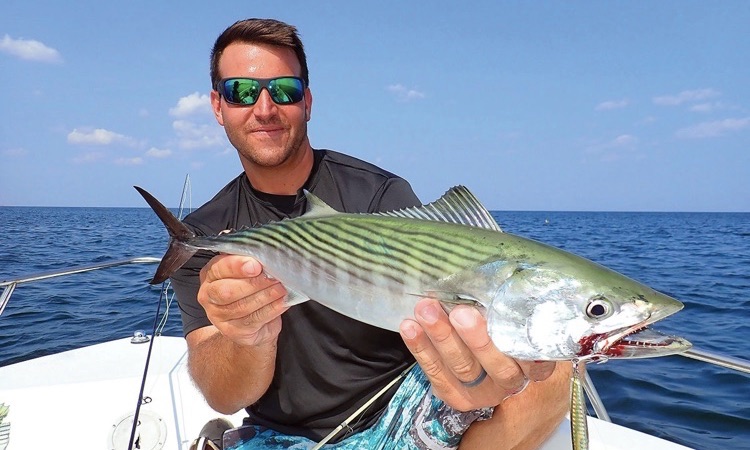
What Do They Eat?
Bonitos are predatory fish that prey on smaller fish and sea creatures. Anchovies, squid, sardines, herring, mackerels, and shrimp are some of their favorite meals.
The diet of a Bonito varies depending on the species’ presence in the same region as the fish. Nonetheless, all Bonito Fish are predatory, flesh-eating predators.
Reproduction and Lifespan
The average age of sexual maturity for these fish is two years. The season when spawning occurs varies from year to year. Atlantic Bonitos, for example, breed throughout the summer, whereas Pacific Bonitos do so between January and May.
The male and female are closely monitored when they are in the spawning area. The eggs will be fertilized by the water droplets released by the males, just as other types of fish eggs would be.
After laying their eggs, neither the male nor female takes any measures to protect them or look after them. The eggs hatch approximately three days after being deposited.
Catching & Cooking
Some individuals fish these species both recreationally and commercially. Some people catch little Bonitos to use as bait for larger ones, such as mackerel.
Furthermore, it’s common knowledge that capturing a Bonito is beneficial practice for tackle fishing. While they’re caught all year, more of them appear in the spring or summer.
These fish are sometimes used in cooking, however many people find that they have too powerful a flavor and an unpleasant greasy texture. Bonito meat is dark crimson in color. If you wish to taste these fish, here are some recipes to try.
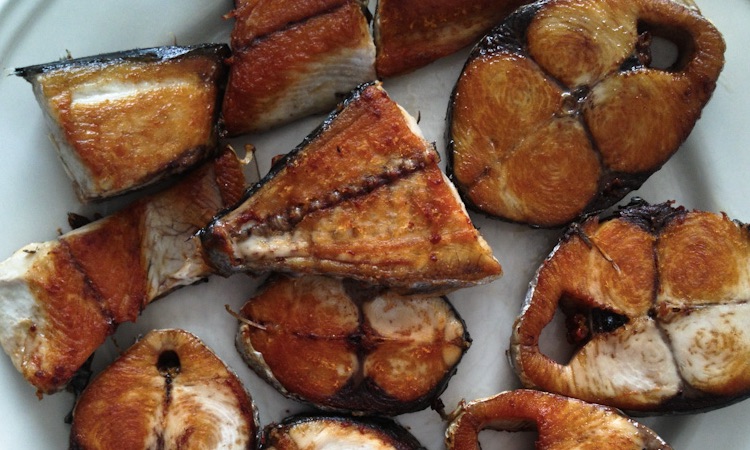
What Does Bonito Taste Like?
Something along the lines of a mix of mackerel and tuna, for example. Expect meat that isn’t as firm as tuna, and an oilier, fattier flavor to match. This makes bonito ideal for combining with strong tastes in Spain and the Balkans, as it is custom.
Younger and smaller bonito will have flesh that is lighter in color and taste than skipjack tuna, although it will still be darker in color. Bonito is revered as a delicacy in many countries, and grilled bonito is appreciated by virtually everyone.
Young bonito is frequently kept and eaten in the Balkans and Turkey, often with sliced red onion, as mezze—snacks to go with drinking and socializing.
When capturing these fish, it’s usually a good idea to bleed them as soon as possible. They also deteriorate quickly if kept cold, so ice is crucial. You’ll understand why bonito is such a hit in other countries after just one meal prepared properly!
Bonito vs Bonita
Bonita fish, on one hand, are similar to Bonito fish. However, a Bonita Fish is not the same as a Bonito Fish. Euthynnus Alletturaturs is the scientific name for Bonita Fish. Bonito Fish are more closely related to tuna.


